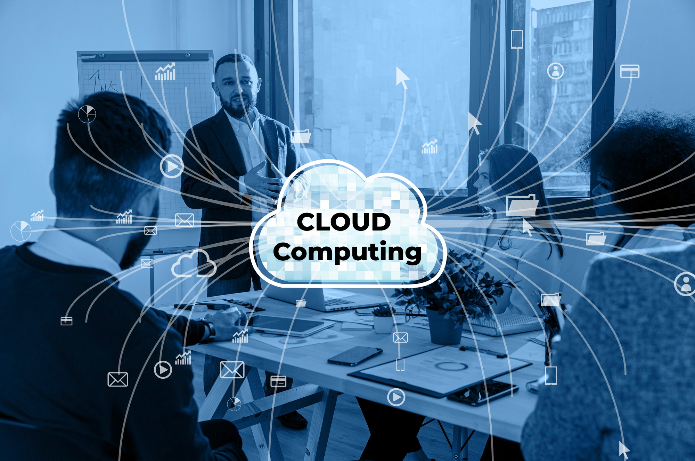Cloud Computing: Trends and Benefits for Businesses in 2025

Cloud Computing: Trends and Benefits for Businesses in 2025
Introduction
Cloud computing has become a game-changer for businesses globally. As we move toward 2025, it continues to evolve, offering enhanced flexibility, scalability, and cost-efficiency. In this blog, we will explore what cloud computing is, its benefits for businesses, and the top trends that will dominate this space in 2025.
What is Cloud Computing?
Cloud computing refers to the delivery of computing services—including storage, processing, networking, and software applications—over the internet ("the cloud"). Instead of relying on local servers or personal devices, businesses can store and access data on remote servers. The main models of cloud computing include:
- Public Cloud: Services offered over the internet to the general public.
- Private Cloud: Cloud infrastructure dedicated to a single organization.
- Hybrid Cloud: A combination of both public and private cloud systems, allowing data and applications to be shared between them.
The Benefits of Cloud Computing for Businesses
- Cost Efficiency: Businesses can reduce costs related to IT infrastructure, maintenance, and hardware by using cloud services on a pay-as-you-go basis.
- Scalability: Cloud platforms allow businesses to scale their resources up or down based on demand without needing to invest in additional physical hardware.
- Flexibility and Accessibility: Employees can access cloud-based tools and data from anywhere, enhancing collaboration and productivity.
- Security: Leading cloud providers offer advanced security protocols, data encryption, and backup services to protect business data.
- Disaster Recovery: Cloud computing ensures businesses have disaster recovery options in case of hardware failure or natural disasters.
Key Trends in Cloud Computing for 2025
a. Multi-Cloud and Hybrid Cloud Environments
Businesses are increasingly using a combination of different cloud services, often from multiple providers. A multi-cloud strategy allows businesses to avoid vendor lock-in, improve risk management, and ensure more flexibility.
b. AI and Cloud Integration
In 2025, artificial intelligence (AI) and machine learning (ML) will be deeply integrated into cloud platforms. Businesses will use AI-powered cloud solutions for everything from predictive analytics to personalized customer experiences and automated workflows.
c. Edge Computing
Edge computing is the practice of processing data closer to the source rather than in a centralized data center. This reduces latency and speeds up decision-making, making it an important trend for industries like manufacturing, healthcare, and IoT.
d. Cloud Security Enhancements
With cyber threats evolving rapidly, cloud providers will continue to strengthen their security measures. Expect to see more advanced encryption, better identity management solutions, and greater control over access to sensitive data.
e. Serverless Computing
Serverless computing allows businesses to run code without having to manage servers. This increases efficiency, reduces costs, and improves the speed of development, making it an attractive option for businesses looking to streamline operations.
f. Sustainability in the Cloud
In 2025, there will be a greater emphasis on using sustainable cloud services. Many cloud providers are transitioning to renewable energy sources and implementing green data centers to reduce their carbon footprint.
How Cloud Computing is Shaping Business Transformation
Cloud computing is more than just a technology shift; it’s transforming the way businesses operate:
- Digital Transformation: Cloud enables businesses to digitize operations, improving customer service, and innovation.
- Remote Work: The cloud has made remote work a reality by enabling employees to access files, applications, and collaborate from anywhere.
- Collaboration Tools: Cloud-based software like Google Workspace, Microsoft 365, and project management tools (e.g., Trello, Slack) have revolutionized teamwork.
- Real-Time Analytics: Cloud services offer real-time analytics, which helps businesses make data-driven decisions faster.
Challenges in Adopting Cloud Computing
- Data Security and Privacy Concerns: Storing sensitive data off-site may raise concerns about data protection and privacy.
- Downtime and Service Outages: Despite being reliable, cloud services may experience outages that impact business operations.
- Integration with Legacy Systems: Businesses with older systems may find it difficult to integrate their existing technology with new cloud platforms.
Conclusion
Cloud computing will remain a cornerstone of business innovation in 2025. As cloud technologies continue to evolve, businesses will enjoy even more advantages in terms of flexibility, scalability, and cost reduction. By embracing cloud computing, businesses can improve efficiency, enhance security, and ensure they stay competitive in the rapidly changing market. As a forward-thinking business, it’s crucial to keep track of these emerging trends to maximize the potential of cloud computing for long-term success.
